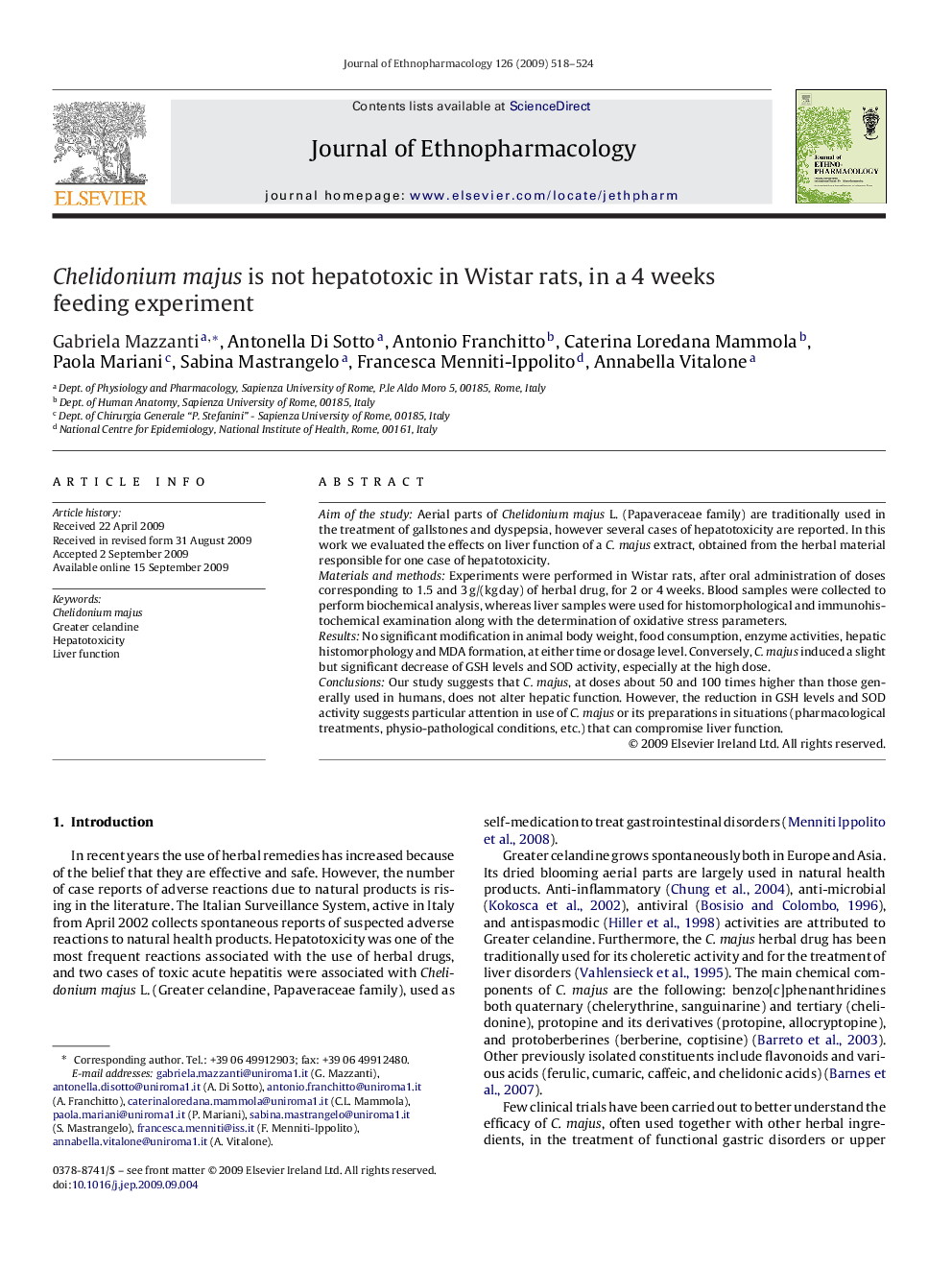| کد مقاله | کد نشریه | سال انتشار | مقاله انگلیسی | نسخه تمام متن |
|---|---|---|---|---|
| 2546474 | 1124027 | 2009 | 7 صفحه PDF | دانلود رایگان |

Aim of the studyAerial parts of Chelidonium majus L. (Papaveraceae family) are traditionally used in the treatment of gallstones and dyspepsia, however several cases of hepatotoxicity are reported. In this work we evaluated the effects on liver function of a C. majus extract, obtained from the herbal material responsible for one case of hepatotoxicity.Materials and methodsExperiments were performed in Wistar rats, after oral administration of doses corresponding to 1.5 and 3 g/(kg day) of herbal drug, for 2 or 4 weeks. Blood samples were collected to perform biochemical analysis, whereas liver samples were used for histomorphological and immunohistochemical examination along with the determination of oxidative stress parameters.ResultsNo significant modification in animal body weight, food consumption, enzyme activities, hepatic histomorphology and MDA formation, at either time or dosage level. Conversely, C. majus induced a slight but significant decrease of GSH levels and SOD activity, especially at the high dose.ConclusionsOur study suggests that C. majus, at doses about 50 and 100 times higher than those generally used in humans, does not alter hepatic function. However, the reduction in GSH levels and SOD activity suggests particular attention in use of C. majus or its preparations in situations (pharmacological treatments, physio-pathological conditions, etc.) that can compromise liver function.
Chelidonium majus L. (Fam. Papaveraceae) administered at doses about 50 and 100 times higher than those generally used in humans, does not alter hepatic morphology and function in Wistar rats. The figure showed that normal liver histomorphology and regular parenchymal architecture are present in A (control) and B (C. majus extract 3 g/(kg day)) Masson's stain. Original magnification, 20×.Figure optionsDownload as PowerPoint slide
Journal: Journal of Ethnopharmacology - Volume 126, Issue 3, 10 December 2009, Pages 518–524